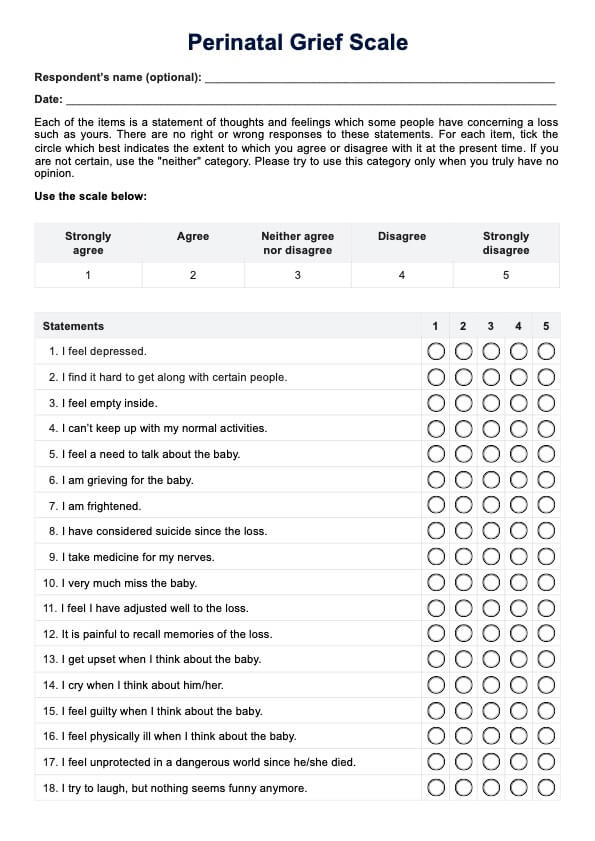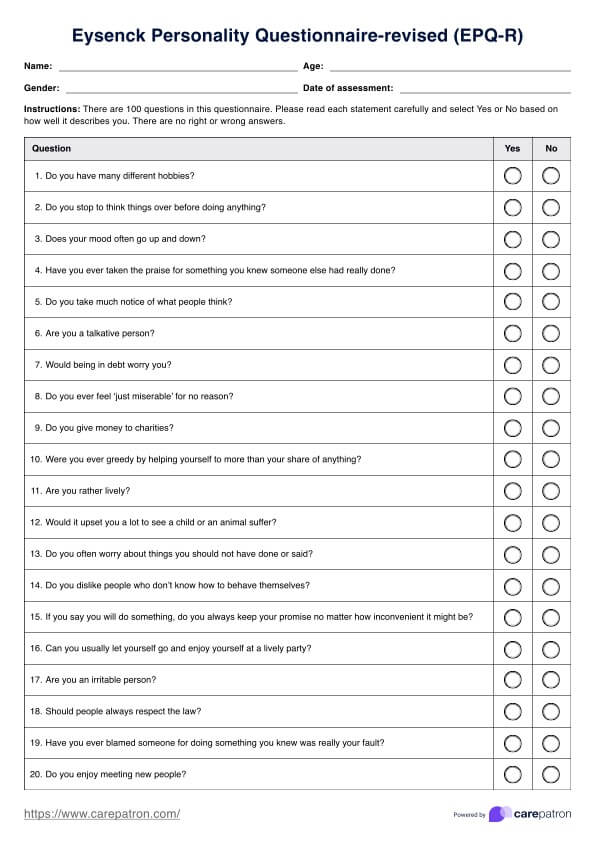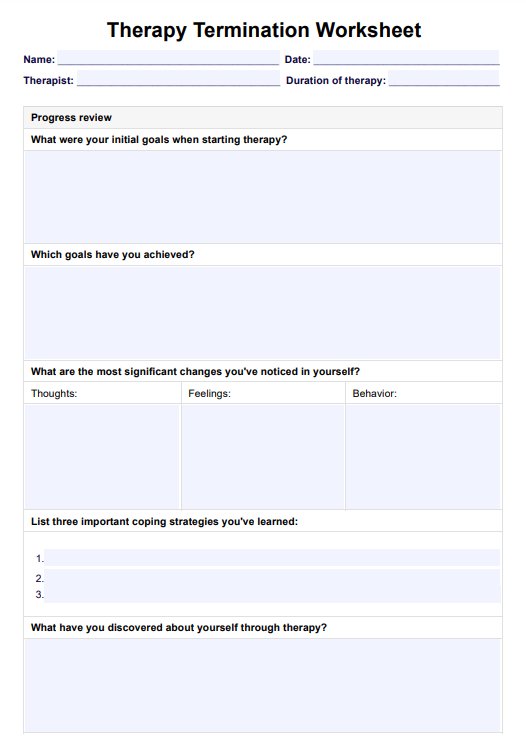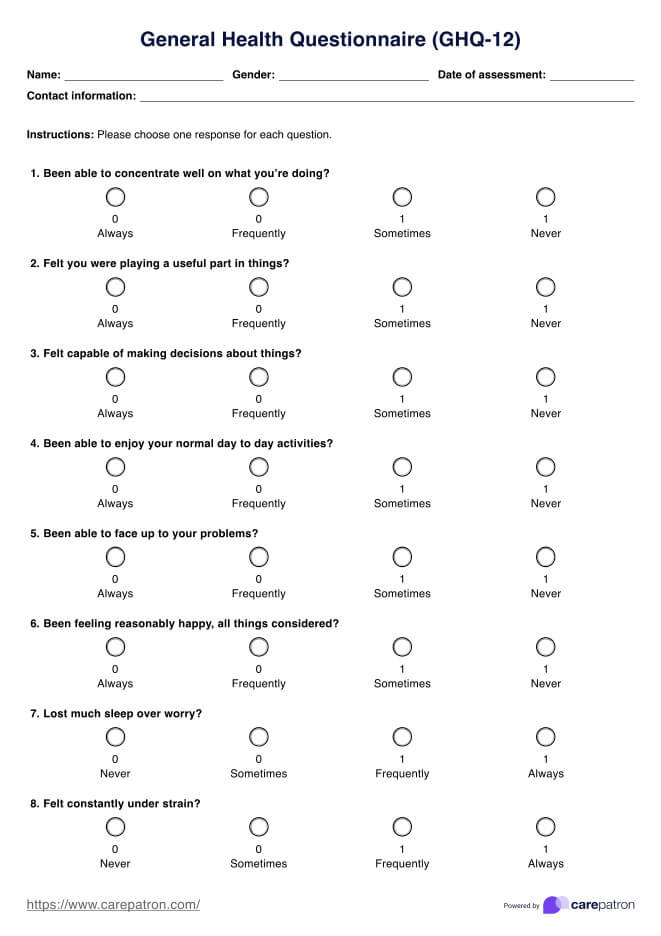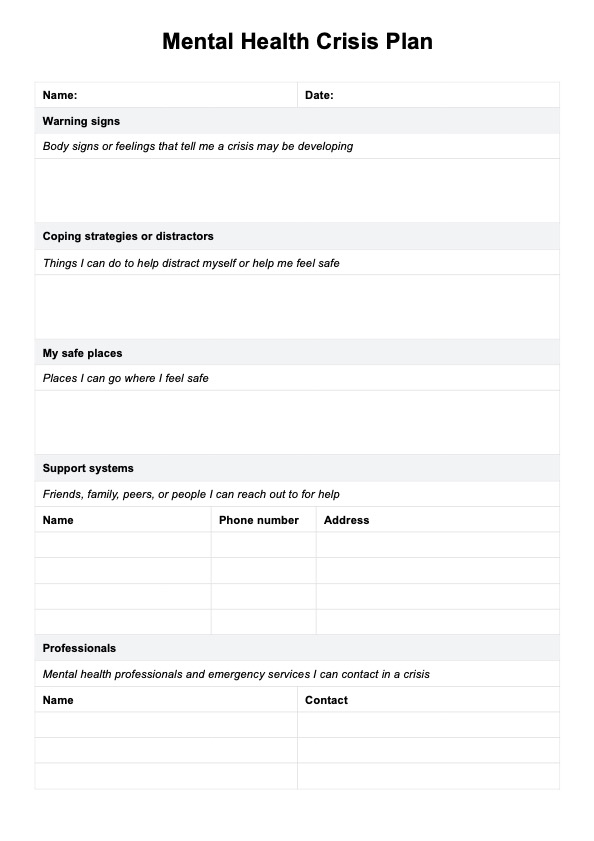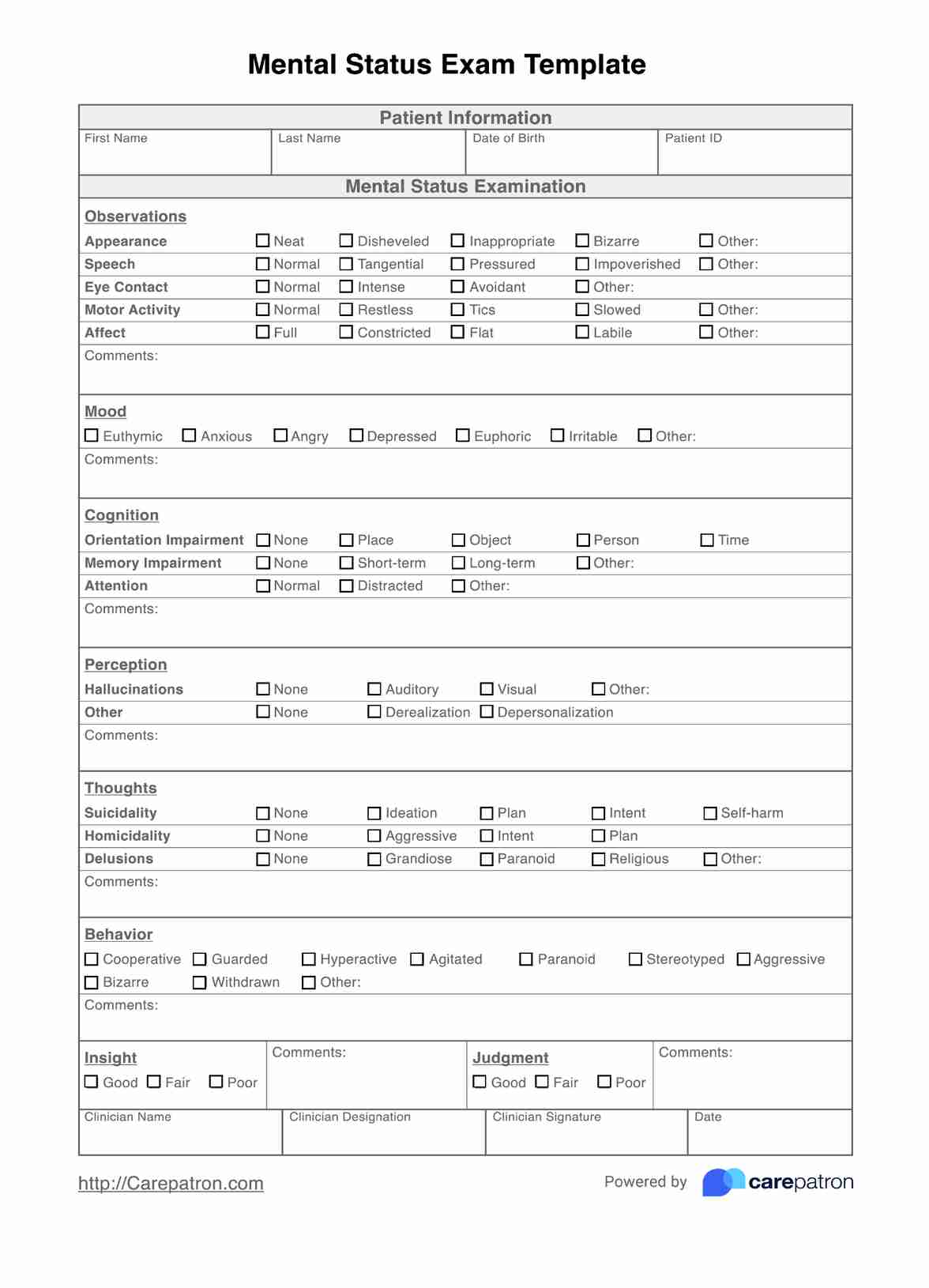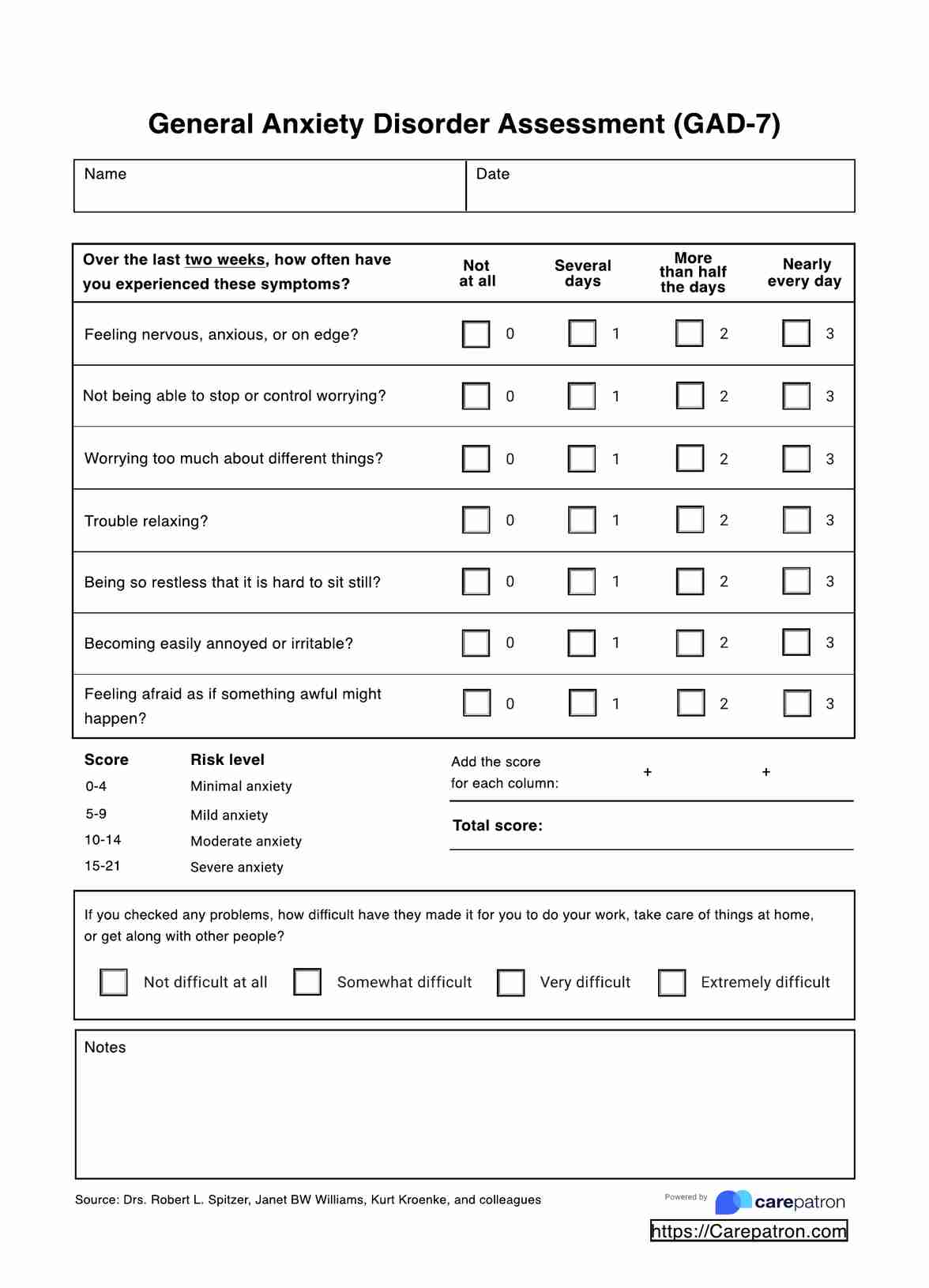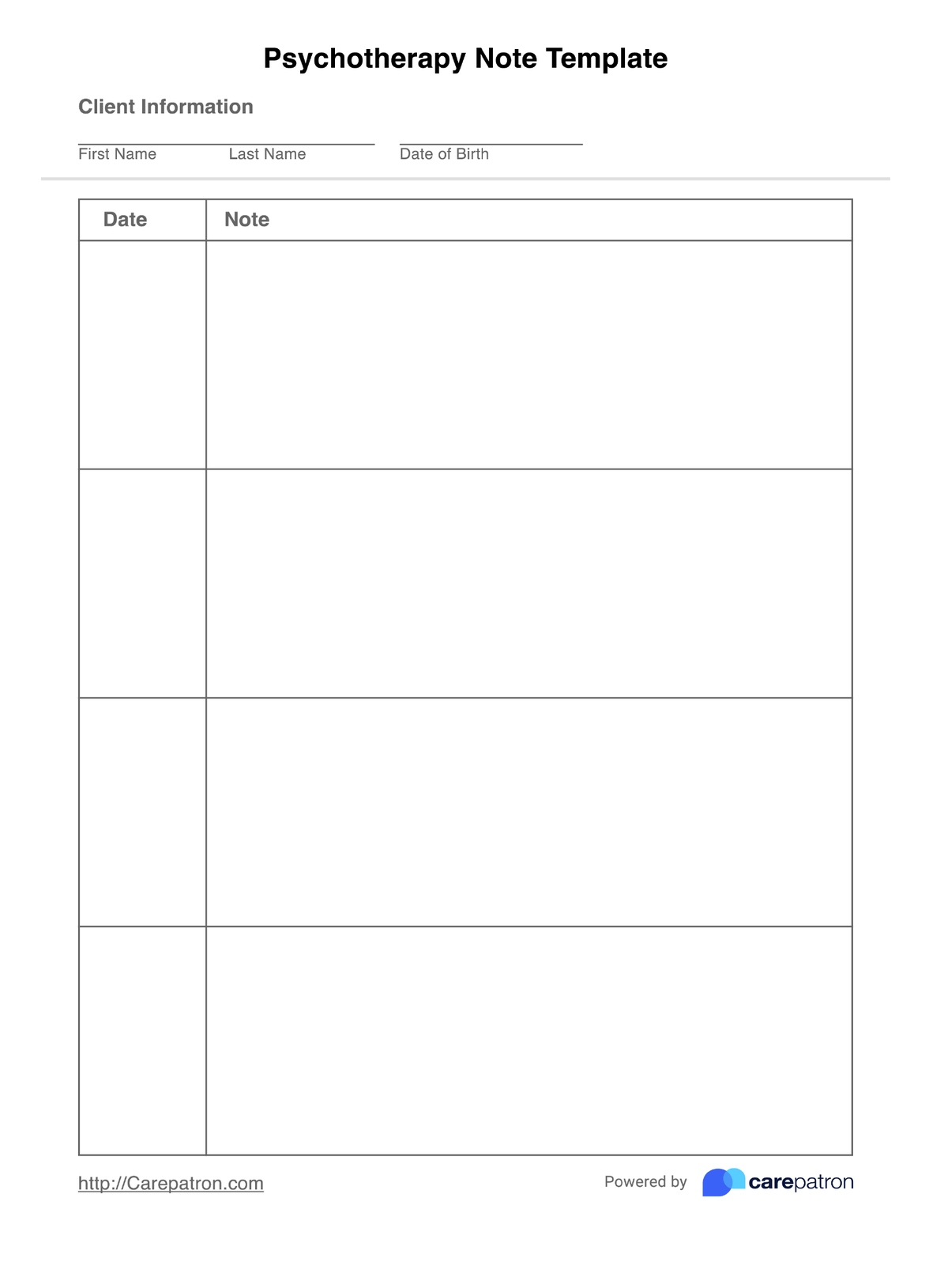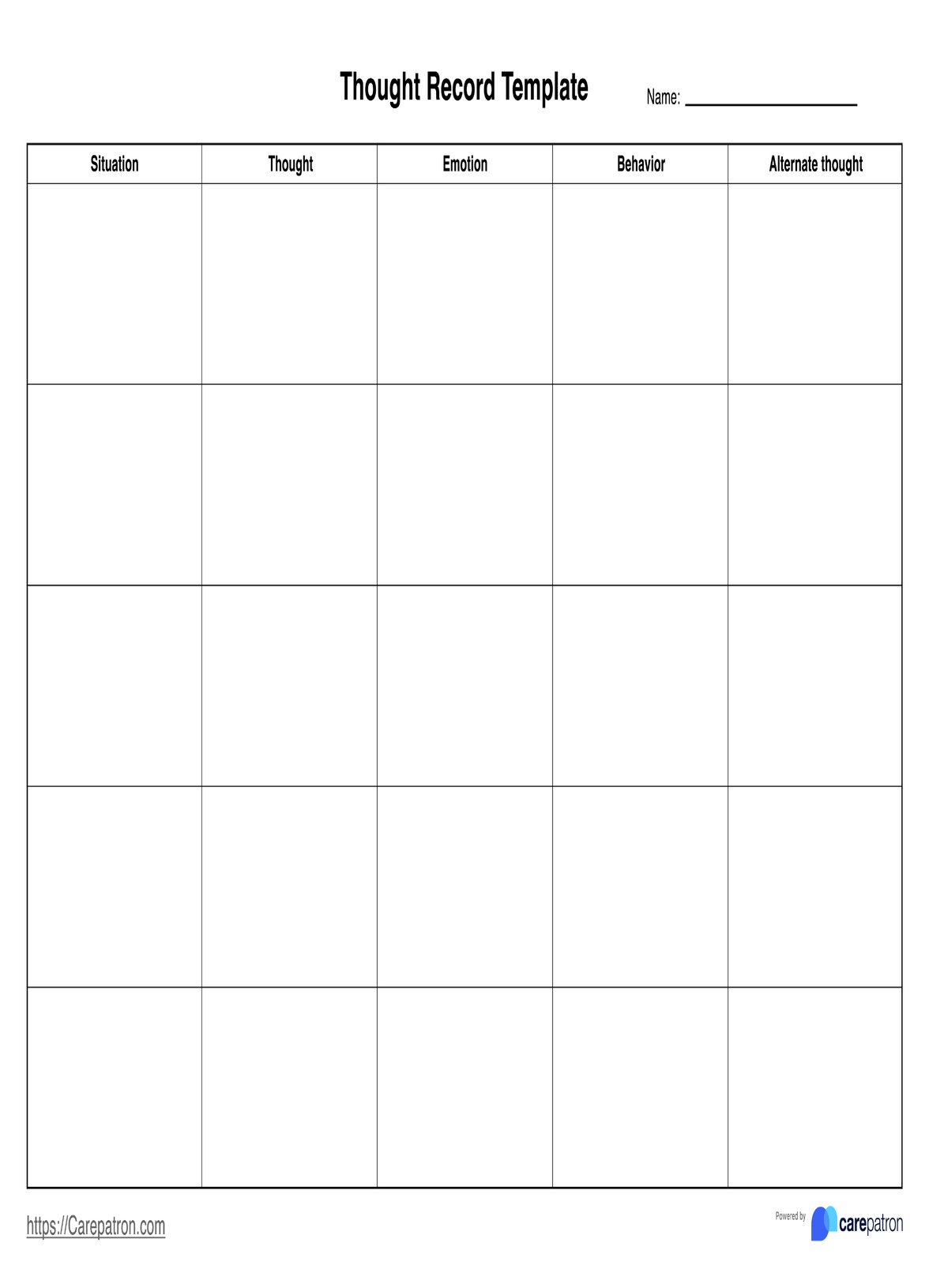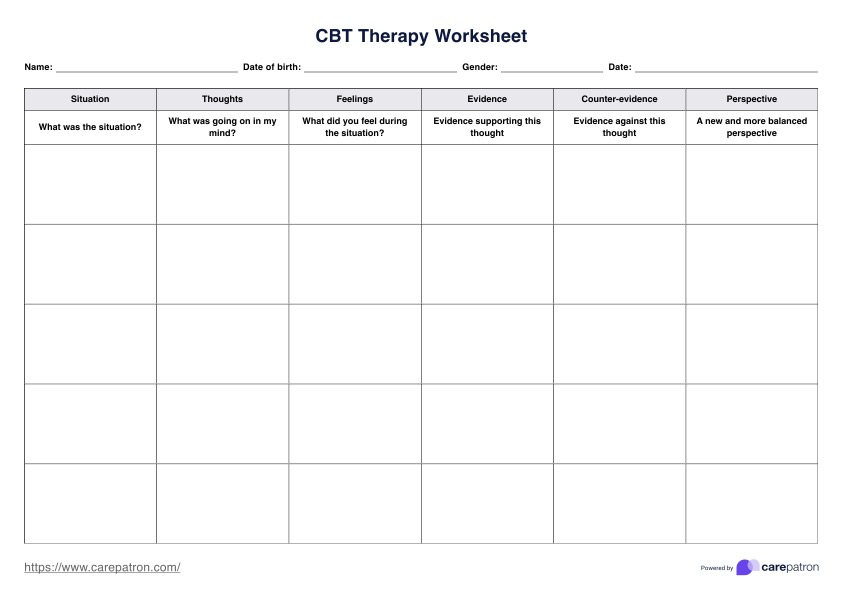Geriatic Depression Scale
Use the Geriatric Depression Scale (GDS) for detecting depression in older adults. Access a free PDF template here.


What is the Geriatric Depression Scale (GDS)?
The Geriatric Depression Scale (GDS) is a widely used screening tool designed to identify depression in older adults. It was initially developed by researchers Yesavage and colleagues (1982) to facilitate the assessment of depression, specifically in the geriatric population.
This has become a staple in clinical gerontology due to its ease of use and focus on the affective and non-somatic aspects of depression, aligning with the presentation of depression in elderly patients.
Psychiatric research has shown that the GDS maintains a high correlation with other depression scales, reinforcing its reliability. Meta-analysis studies and pooled sensitivity evaluations have confirmed this, emphasizing the scale's robust nature across varied geriatric populations (Brañez-Condorena et al., 2021).
The GDS is available in two versions: long and short. The long form consists of 30 questions, while the short form includes 15.
Geriatric Depression Scale long form and short forms
The GDS long form (GDS-30) is the original version of the scale and is considered more comprehensive in assessing depressive symptoms. It has been extensively validated and widely used in various settings, including clinical practice, nursing homes, and community-based studies.
On the other hand, the GDS short form (GDS-15) is a shorter version of the scale designed for situations where a briefer assessment is preferred. It has demonstrated good psychometric properties and high correlation with the long form. Recent evidence supports the use of the GDS-15 as a valid and reliable screening tool for depression in older adults (Acosta Quiroz et al., 2020; Figueiredo-Duarte et al., 2019).
In clinical practice, the GDS assists healthcare practitioners by offering an efficient and validated method to probe for depressive symptoms experienced over the past week. Identifying and treating severe depression is particularly important, as the GDS categorizes depression severity into mild, moderate, and severe.
Geriatic Depression Scale Template
Geriatic Depression Scale Example
Major depressive disorder among elderly patients
Depression is a common mental health condition among older adults, but it is often underdiagnosed and undertreated. Major depression, in particular, has a significant prevalence among older adults and requires prompt recognition and appropriate treatment to prevent severe consequences.
Depressive symptoms in older people can manifest differently than in younger populations, with more emphasis on somatic complaints and cognitive impairment rather than affective symptoms (Kurlowicz & Greenberg, 2007). The Geriatric Depression Scale aims to address these unique presentations, making it a valuable tool for healthcare practitioners working with geriatric patients.
Several factors can make it difficult to diagnose depression in older adults:
- Focus on somatic symptoms: Older adults may experience physical complaints like fatigue, weight loss, or sleep problems, which can be mistaken for medical conditions.
- Cognitive impairment: Conditions like dementia can make it challenging for older adults to express their emotions clearly.
The GDS addresses these challenges by focusing on symptoms easily understood by older adults, even those with mild cognitive impairment. Still, it is essential to reference insights with other data sources, such as other informants and the criteria in the Diagnostic and Statistical Manual, 5th edition (DSM-5).
How to use this Geriatric Depression Scale
Using the Geriatric Depression Scale is easy. Here are the steps:
Step 1: Administer the test
Read each question out loud and ask the respondent to answer "yes" or "no." It is essential to read each question aloud and give the respondent enough time to respond. Make it clear that there are no right or wrong answers and that they should answer truthfully.
Step 2: Record the responses
Record the answer in the answer choices column. Fill in the appropriate column as the respondent answers each question. Note which question you are on so that you do not miss any.
Step 3: Assign points
These questions are phrased in such a way that a "yes" answer indicates that you do not have depressive symptoms. As a result, if the respondent answers "yes" to any of these questions, they receive a score of 0 in the score column. If they respond "no," indicating the presence of depressive symptoms, they receive one point.
Step 4: Compute total scores
After you've recorded your answers to each question, add up your total score for all questions to get a total score out of 15.
Step 5: Interpret the scores
A score of 5 or higher is suggestive of depression. Further evaluation and treatment may be necessary.
It is important to note that the GDS is a screening rather than a diagnostic tool. As a result, a high GDS score may indicate the need for additional evaluation against diagnostic criteria and treatment for clinical depression by a healthcare professional.
How do you score the Geriatric Depression Scale?
Geriatric Depression Scale Scoring depends on whether you use the short-form or long-form versions. The person answering it will select between YES or NO for their answers. Each answer will score a 0 or a 1. The answer that will score 1 will depend on the question.
For the short-form version:
- For questions 1, 5, 7, 11, and 13: YES is equal to 0 points, while NO is equal to 1 point.
- For questions 2-4, 6, 8-10, 12, and 14-15: YES is equal to 1 point, while NO is equal to 0 points.
- The scores need to be added to get the total and final score.
For the long-form version:
- For questions 1, 5, 7, 9, 15, 19, 21, 27, 29-30: YES is equal to 0 points, while NO is equal to 1 point.
- For questions 2-4, 6, 8, 10, 11-14, 16-18, 20, 22-25, 26, and 28: YES is equal to 1 point, while NO is equal to 0 points.
- The scores need to be added to get the total and final score.
Both scale versions don't require particular calculations, making this one of the most straightforward depression scales to score.
When would you typically use a Geriatric Depression Scale?
You might typically use a GDS in the following situations:
Screen for depression in older adults
As people get older, they may face new challenges and changes in their lives, such as physical health issues, cognitive impairment, social isolation, and the loss of loved ones. These difficulties may increase the likelihood of mental health problems such as depression or anxiety, which can have severe consequences for their mental health and well-being.
The Geriatric Depression Scale (GDS) helps screen for depression in older adults, including those with medical illness. It is used in various clinical settings such as community, acute care, and long-term care.
Identify individuals who may need further evaluation and treatment for depression
If an older adult scores high on a GDS, it may indicate that they are suffering from depression and require further evaluation and treatment. Depression is a serious condition with serious consequences if left untreated, including an increased risk of suicide and decreased quality of life.
Therefore, identifying individuals who may be at risk for depression and providing them with appropriate treatment can be critical for their mental and physical health.
Monitor changes in an individual's depressive symptoms over time
A GDS can also be used to track changes in a person's depressive symptoms over time. You can track changes in an individual's mood, thoughts, and behaviors and assess the effectiveness of treatment interventions by administering the GDS at regular intervals. For instance, mild depression could either lead to moderate depression or be treated with the proper support.
References
Acosta Quiroz, C. O., García-Flores, R., & Echeverría-Castro, S. B. (2020). The geriatric depression scale (GDS-15): Validation in Mexico and disorder in the state of knowledge. The International Journal of Aging and Human Development, 93(3), 854–863. https://doi.org/10.1177/0091415020957387
Brañez-Condorena, A., Soriano-Moreno, D. R., Navarro-Flores, A., Solis-Chimoy, B., Diaz-Barrera, M. E., & Taype-Rondan, A. (2021). Accuracy of the geriatric depression scale (GDS)-4 and GDS-5 for the screening of depression among older adults: A systematic review and meta-analysis. PloS One, 16(7), e0253899. https://doi.org/10.1371/journal.pone.0253899
Figueiredo-Duarte, C., Espirito-Santo, H., Sério, C., Lemos, L., Marques, M., & Daniel, F. (2019). Validity and reliability of a shorter version of the geriatric depression scale in institutionalized older Portuguese adults. Aging & Mental Health, 1–7. https://doi.org/10.1080/13607863.2019.1695739
Kurlowicz, L.H., & Greenberg, S.A. (2007). The geriatric depression scale (GDS). American Journal of Nursing, 107, 67-68. https://doi.org/10.1097/01.NAJ.0000292207.37066.2F
Yesavage, J. A., Brink, T. L., Rose, T. L., Lum, O., Huang, V., Adey, M., & Leirer, V. O. (1982). Development and validation of a geriatric depression screening scale: a preliminary report. Journal of psychiatric research, 17(1), 37–49. https://doi.org/10.1016/0022-3956(82)90033-4
Commonly asked questions
The Geriatric Depression Scale is a self-report measure used to assess depression in older adults. It consists of a series of yes/no questions that evaluate depressive symptoms over the past week.
It is designed to detect depression in elderly individuals, who may experience depression differently than younger people. It is used to screen for depressive symptoms, determine the severity of depression, and identify individuals who may benefit from further evaluation or treatment for depression.
The Geriatric Depression Scale offers several advantages over other depression scales. It is a self-report measure that comes in both a 30-item long form and a 15-item short form, making it adaptable to different settings and patient needs. The GDS is designed to be easy to administer and interpret, taking approximately 5 to 7 minutes to complete, which is ideal for individuals who may be fatigued or have difficulty concentrating for extended periods.


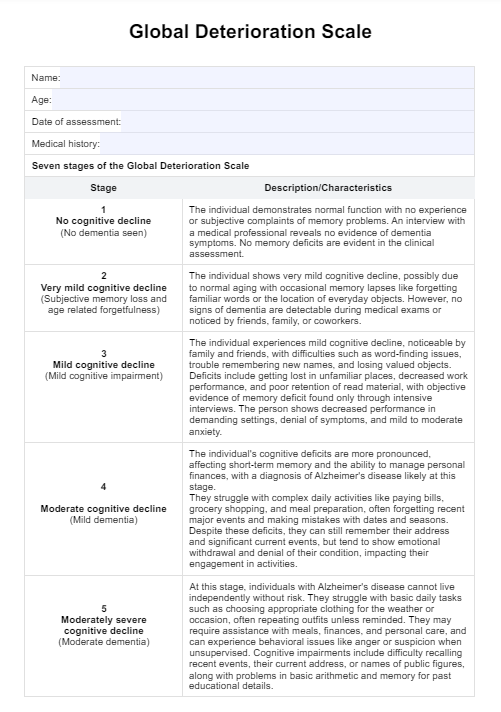
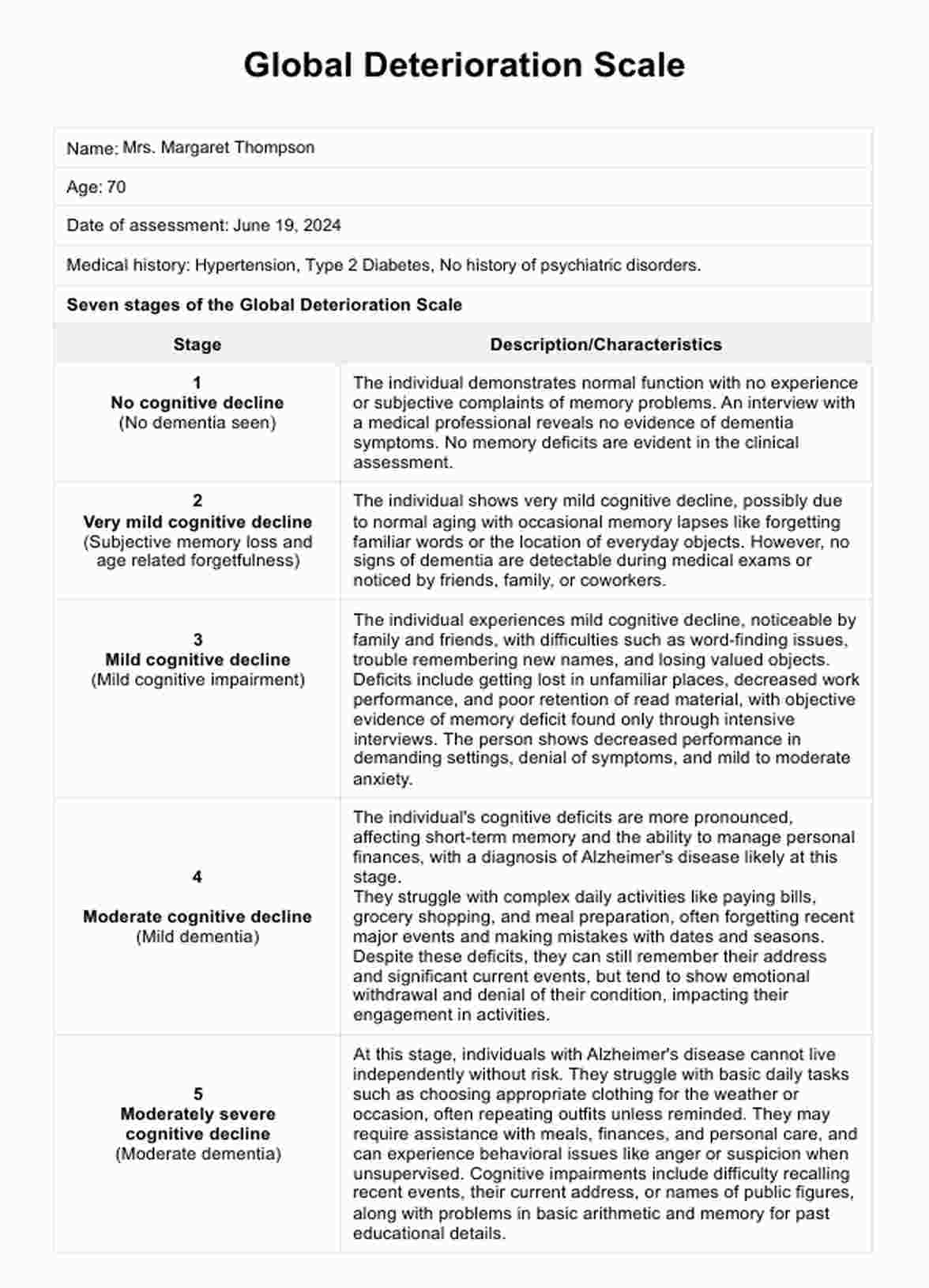

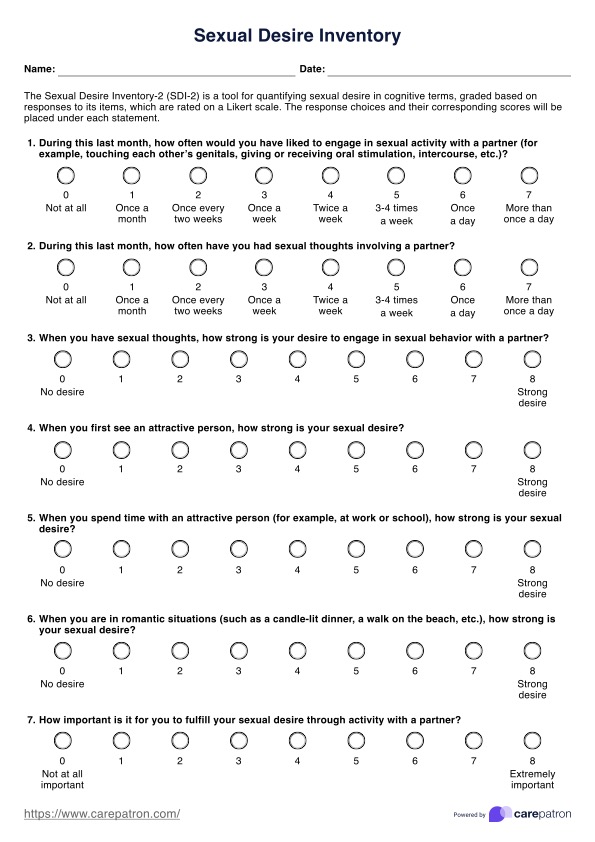
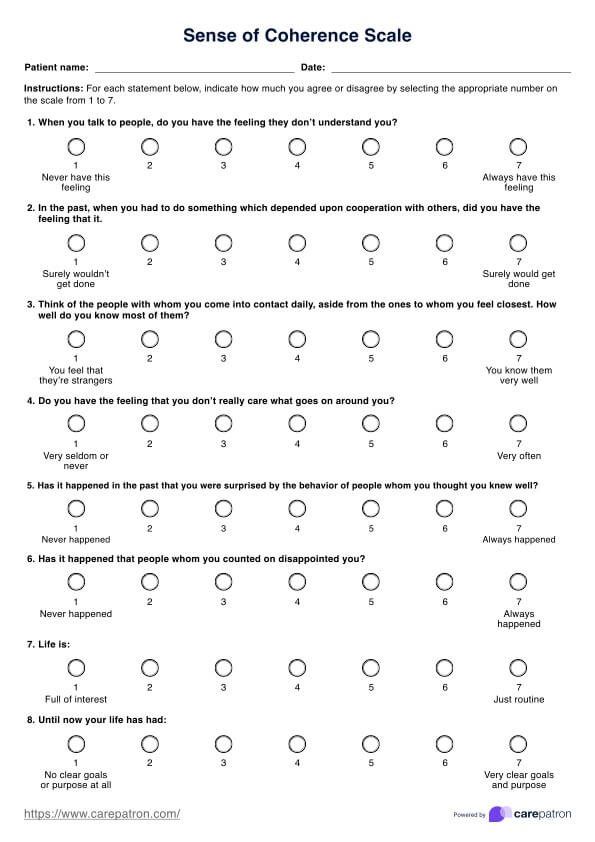
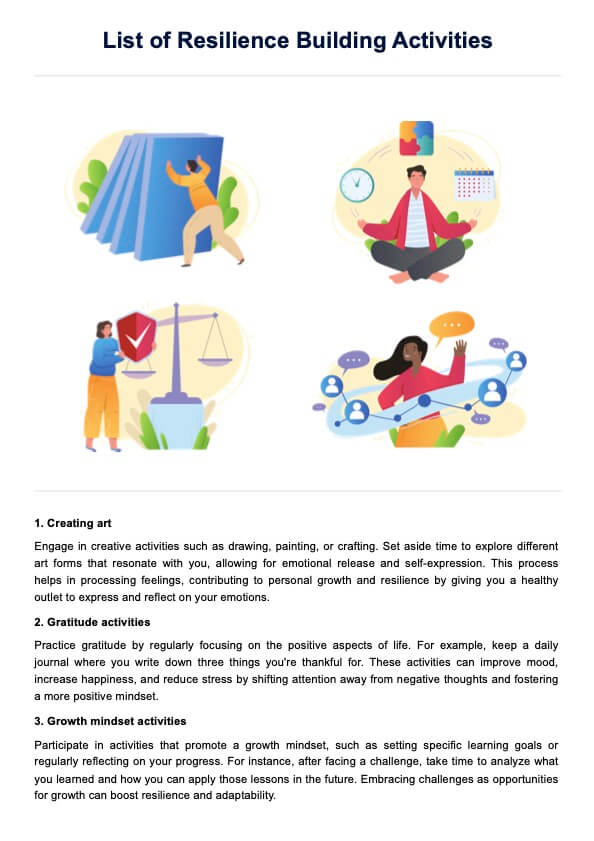









-template.jpg)





















































































